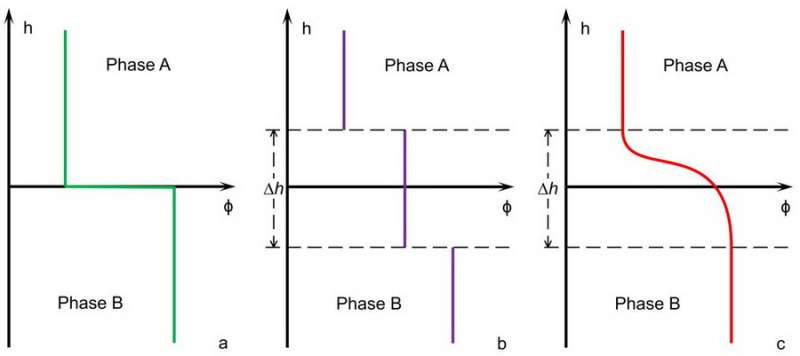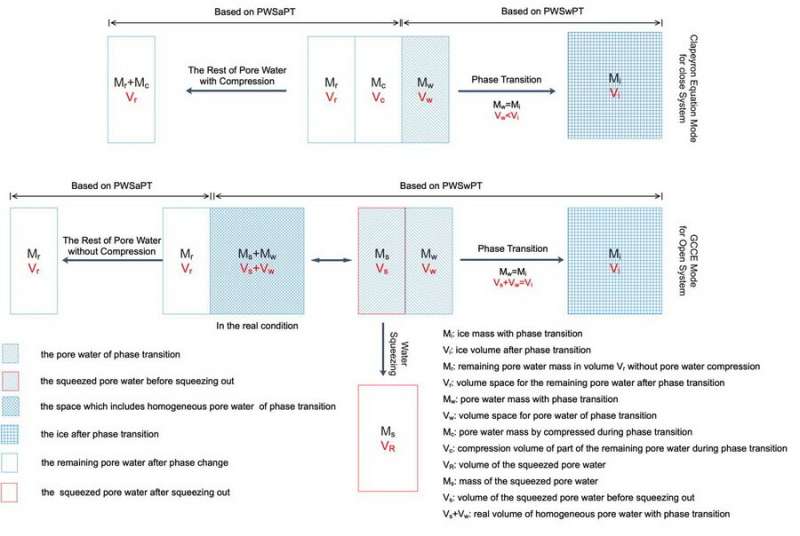Researchers reveal nature of soil water and its phase transition

The state variation and phase transition of non-uniform water in soils play an important role in hydrothermal process simulation in cold regions, the formation and decomposition of hydrates, exploring water and ice in Moon, and others changing questions related to aqueous interfaces.
Recently, the charactering of soil water state got increasingly focused on in soil science, but there still exists poorly understanding in its non-uniform nature.
Researchers from the Northwest Institute of Eco-Environment and Resources of the Chinese Academy of Sciences (CAS) recently tried to propose a theory framework to further characterize the non-uniform nature of soil water and its phase transition dynamics.
They introduced the static and dynamic theory methods of non-uniform water based on diffuse interface model to analyze non-uniform water state dynamics and water density and the pore water pressure.
Result clarifies the concepts of pore water state, pore water pressure and matric potential in classical soil mechanics.
The researchers also proposed that the phase transition theory of non-uniform water was proposed and found the generalized Clausius-Clapeyron equation (GCCE) is consistent with Clapeyron equation in nature.
Furthermore, they showed that spatial non-uniform of interface water and its phase transition have a competitive advantage for key issues such as spatially non-uniform of soil-water density, questions of GCCE, pressure melting, promoting effect of substrates on hydrate formation and others.

These results highlight the role of substrate-water unit in soil science and provide a theory basis for engineering and environmental sciences relative to frozen soil.
Relevant results have been published in Advances in Colloid and Interface Science, titled "Spatial state distribution and phase transition of non-uniform water in soils: Implications for engineering and environmental sciences."
More information: Lianhai Zhang et al, Spatial state distribution and phase transition of non-uniform water in soils: Implications for engineering and environmental sciences, Advances in Colloid and Interface Science (2021). DOI: 10.1016/j.cis.2021.102465
Provided by Chinese Academy of Sciences





















